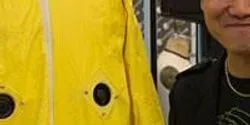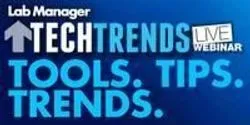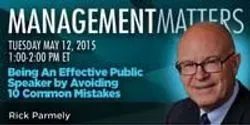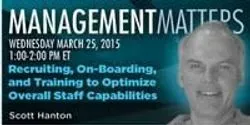
Lab Manager
Lab Manager provides guidance and resources to help laboratory leaders run their labs like a business. We are the only publication specifically focused on all aspects of running a lab.All by Lab Manager
Filter by
AllArticlesAudioEbooksEventsInfographicsNewsProductsSurveysDocumentsVideosVirtual EventsWebinars
Lysosomes are the garbage disposals of animal cells. As the resources are limited in cells, organic materials are broken down and recycled a lot — and that’s what lysosomes do. Detecting problems with lysosomes is the focus of a new set of fluorescent probes developed by researchers at Michigan Technological University. The Royal Society of Chemistry published their work in January.

This webinar will sharpen your business behavior techniques and will create a positive atmosphere in your lab.
Available on Demand
In the war against Ebola, Cornell University – along with partners International Personnel Protection Inc (IPP) and protective apparel manufacturer Kappler Inc. – will rethink, reimagine and re-engineer protective suits for health care workers on the front lines battling the life-threatening contagion.

By figuring out how to precisely order the molecules that make up what scientists call organic glass — the materials at the heart of some electronic displays, light-emitting diodes and solar cells — a team of chemists from the University of Wisconsin-Madison has set the stage for more efficient and sturdier portable electronic devices and possibly a new generation of solar cells based on organic materials.

Tune in to our live webinar to hear BIOVIA’s Julian Willmott discuss strategies for increasing lab, researcher, and experiment efficiency, technology available to drive these efficiencies, and how chemical development labs today are achieving the next level of successful innovation.
Available on Demand
A recently-released report by the U.S. Centers for Disease Control and Prevention’s advisory committee on safety underlined a flawed understanding of safety and poor leadership as key reasons for safety lapses at CDC laboratories.

A new simple tool developed by nanoengineers at the University of California, San Diego, is opening the door to an era when anyone will be able to build sensors, anywhere, including physicians in the clinic, patients in their home and soldiers in the field. The team from the University of California, San Diego, developed high-tech bio-inks that react with several chemicals, including glucose. They filled off-the-shelf ballpoint pens with the inks and were able to draw sensors to measure glucose directly on the skin and sensors to measure pollution on leaves.

This month, we highlight companies that will be exhibiting at two upcoming tradeshows, Experimental Biology 2015 (EB 2015) and the American Association for Cancer Research’s 2015 annual meeting and Exhibit (AACR 2015). EB 2015 will take over the Boston Convention and Exhibition Center in Boston, MA from March 28-April 1. AACR 2015 will be held at the Pennsylvania Convention Center in Philadelphia, PA, from April 18-22, 2015, with exhibit dates April 19-22. Remember that these specific technologies may not be at the show, but their manufacturers will be on hand to answer any questions you may have.

Great leaders can be made. Tom Crea uses his armed forces experience to show how YOU can become a more effective and impactful leader in your lab with the right tools and motivation.
Available on Demand













